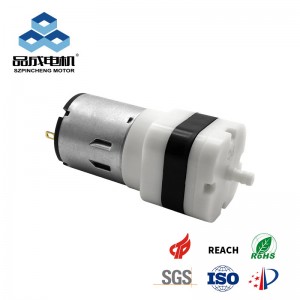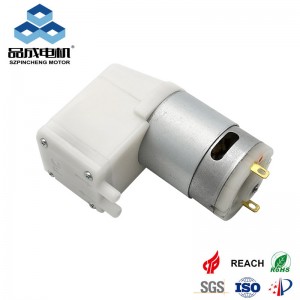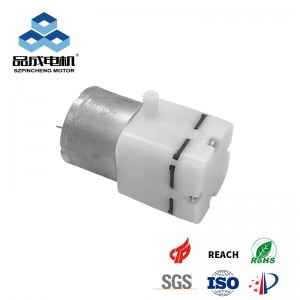Mini diaphragm vacuum pumps (MDVPs), also known as DC vacuum pumps or micro diaphragm pumps, are essential tools in precision-driven industries such as pharmaceuticals, semiconductor manufacturing, and laboratory research.
Selecting the right pump requires a systematic evaluation of technical specifications to balance performance, efficiency, and reliability. This guide examines the top 10 parameters to streamline your decision-making process.
1. Flow Rate (L/min)
Flow rate defines the pump’s gas-handling capacity per minute. Higher flow rates (10–20 L/min) are critical for industrial processes like semiconductor wafer processing, while medical aspirators typically require 1–5 L/min.
Note that flow rates decrease under higher vacuum pressures, so always verify manufacturer data under your operating conditions.
For example, the KNF N86 series maintains stable flow rates even at 50% vacuum levels due to its optimized diaphragm design.
2. Vacuum Pressure (mbar/kPa)
Ultimate vacuum pressure determines the lowest achievable pressure. High-precision medical devices (e.g., prosthetics) demand <50 mbar, whereas laboratory centrifuges operate effectively at 10–100 mbar.
Pumps like the BrandTech MV 2 VARIO achieve 0.3 mbar, making them ideal for analytical instrumentation requiring ultra-high vacuums.
3. Power Supply & Energy Efficiency
DC-powered pumps (12V/24V) dominate portable and off-grid applications due to their 25%+ energy savings over AC models.
Brushless motors, as seen in TOPSFLO’s TF30B-D, reduce heat dissipation and extend lifespan to 15,000 hours.
Prioritize pumps with <50W consumption and high L/min/W ratios for sustainability.
4. Medium Compatibility
Chemical resistance is non-negotiable for corrosive solvents or moisture-laden environments. PTFE-coated diaphragms and stainless steel pump heads, used in Axonlab’s Mini-Vac, prevent contamination in pharmaceutical applications.
Always cross-check the manufacturer’s chemical compatibility charts—EPDM and reinforced nylon are common choices for acid resistance.
5. Noise Level (dB)
Low-noise pumps (<60 dB) are mandatory in hospitals and labs. The Axonlab Mini-Vac employs sound-dampening chambers to reduce operational noise, while the SCL series integrates silencers for IoT-enabled grain storage systems.
6. Size & Weight
Compact designs (e.g., VAA6005 at 100x70x90 mm) suit handheld devices, while lightweight pumps (<1 kg) enhance fieldwork portability.
The RK-095SA motor diaphragm pump exemplifies space-efficient engineering at 32mm diameter.
7. Duty Cycle & Lifespan
Industrial 24/7 operations demand robust motors like Maxon’s Dynaflo 2000 series, which withstand 8,000+ hours of continuous use.
Self-cooling mechanisms and low-wear PTFE diaphragms, as in Sartorius’ Microsart e.jet, minimize maintenance.
8. Certifications & Compliance
Ensure compliance with:
- CE/UL: Safety and electromagnetic compatibility.
- RoHS: Hazardous material-free construction.
- IP64: Dust/water resistance for harsh environments.
ISO 8199-certified pumps are recommended for laboratory-grade purity.
9. Smart Control & Integration
Modern pumps feature IoT connectivity and variable speed drives. The SCL series adjusts flow rates in real-time for nitrogen preservation in grain storage, while BrandTech’s MV 2 VARIO uses TURBO·MODE to optimize backing for turbomolecular pumps.
Prioritize models with PWM or RS485 interfaces for automation.
10. Total Cost of Ownership
Factor in:
- Maintenance: Oil-free designs (e.g., diaphragm pumps) reduce long-term costs.
- Energy Savings: DC pumps cut electricity expenses by 30% over 5 years.
- Warranty: Opt for 2+ year warranties, as offered by Seaflo’s 24V 55PSI pump.
Application-Specific Recommendations
- Medical: Prioritize low noise (<55 dB) and high vacuum (<50 mbar) for prosthetics.
- Industrial: Select corrosion-resistant PTFE/SS pumps (e.g., TOPSFLO TF30B-D) for chemical processing.
- Laboratory: Compact, ISO 8199-compliant pumps like Axonlab Mini-Vac ensure precision.
Conclusion
Choosing the right mini diaphragm vacuum pump hinges on aligning technical specs with operational demands. Innovations in DC efficiency (e.g., brushless motors), material science (PTFE/EPDM), and smart controls are reshaping the industry. Always validate performance against manufacturer datasheets and consult experts for niche applications.
you like also all
Post time: May-26-2025




